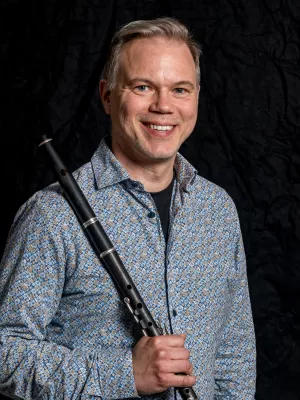
Markus Tullberg
Lecturer

Timber and timbre : Affordances of the simple-system flute
Author
Summary, in English
Department/s
- Teachers (Malmö Academy of Music)
Publishing year
2018-05-01
Language
English
Publication/Series
Perspectives in Music and Music Education
Issue
11
Document type
Licentiate thesis
Topic
- Music
Keywords
- Simple-system flute
- Affordances
- Music education
- Effectivities
Status
Published
Supervisor
- Eva Sæther
- Göran Folkestad
ISBN/ISSN/Other
- ISSN: 1404-6032
- ISBN: 978-91-88409-13-3
Defence date
23 May 2018
Defence time
10:00
Defence place
Liljeforssalen, Musikhögskolan, Ystadvägen 25, Malmö
Opponent
- Per Anders Nilsson (Professor)